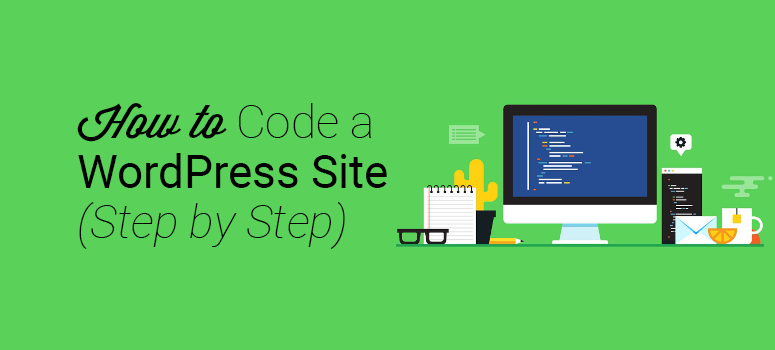
You might be wondering what the average salary for a UX designer is. This article will cover the location, pay ranges and education requirements of UX designers. Read on to find out! Below are the average UX designer salaries in Australia, Canada, and the UK. There are a number of factors that influence salary, but most important is to be passionate about UX design! Read on if you are interested in a career as a UX designer.
Salary ranges
The annual average salary for UX designers is $98,130. This is slightly less than the national median, but still much lower than salaries in other sectors. UX designers in Ireland earn slightly more than other professionals such as engineers and accountants. The average UX designer salary is $75,000 in Ireland, but salaries can be substantially higher in the United States. Many UX designers also receive bonuses with an average of $4,114. 39% of UX designers receive a bonus each and every year.
UX designers get different salaries depending on their industry. But, industries with a lot of digital products tend to place more importance on user experience, as opposed to those in dentistry, which has fewer, but less complex, users. In contrast, the technology and telecommunications sector has plenty of opportunities, and growth in these fields is expected to continue to rise between five and six percent per year. Consider these factors when considering a career as a telecommunications professional:

Education requirements
An undergraduate degree in computer science, or a related field, may be required for UX designers. Software engineering and computer science courses give a solid technical foundation, while interactive design and digital media provide a visually appealing front end. The requirements for admission vary from school to school. They may include a competitive GPA and SAT or ACT scores as well as letters of recommendation. Your personal statement might also be requested.
M.K. She may be interested in working for a UX company after she has graduated. This will allow her to build up experience, as well as determine whether this career path is right for her. When she has a portfolio and clients, she is able to take on side jobs that will provide a steady income. Her steady income will be assured by developing a network of clients after she leaves a company.
Localities
The salary for UX designers depends on their location, experience, company size and other factors. In large markets, a UX designer at entry level may make around PS27,000. However, a designer in a smaller market might earn less. The Bureau of Labor Statistics reports that UX designers in America make the most starting salaries.
Although the average salary in major UX cities is different depending on where you live, there are differences in how much an ux designer makes. Payscale's recent survey found that UX professionals in San Francisco, Seattle and London are 32% less than their counterparts in the U.S. Moving to a smaller town or market might be an option for seasoned UX designers.

Experience
User experience is the total experience of using a product. It covers all aspects of a user's experience, from purchase to ownership through troubleshooting. UX designers focus on more than the usability of a product. They also look at its enjoyment, efficiency, and fun. Good user experience means that it meets the needs and wants of each user. There are many methods to design for a good UX.
The typical education and experience requirements for a UX designer are listed below. Experience in software development and design of websites and mobile apps is desirable. However, UX Designers must have basic knowledge of HTML and CSS. Understanding of accessibility and usability concerns is also essential. Candidates must be passionate about UX and be open to constructive criticism.
FAQ
Web development is hard?
Web Development is not easy, but if you have a passion for coding, there are many online resources that can help you learn how to code.
You just need to find the right tools for yourself and follow them step by step.
There are many tutorials available on YouTube and other platforms. You can also access free online software like Sublime Text, Notepad++, and others.
There are also lots of books available in bookstores and libraries. These are some of the most well-known:
O'Reilly Media's "HeadFirst HTML & CSS"
O'Reilly Media's "Head First PHP/Mysql 5th Edition"
Packt Publishing: "PHP Programming to Absolute Beginners"
I hope this article helped you.
How Much Does It Cost To Create An Ecommerce Website?
It depends on which platform you choose, and whether the freelancer is employed directly or through a service provider. eCommerce sites typically start at around $1,000.
Once you have chosen a platform, expect to pay between $500 and $10,000.
The average cost of a template will not exceed $5,000. This includes any customizations that you might need to suit your brand.
How do I design a website.
The first step is to understand what you want your site to do for your customers. What are your customers looking for?
What kind of problems can they have if they cannot find what they want on your site?
Once you know this, you must figure out how to solve those problems. You also need to make sure that everything on your site looks right. It should be easy-to-use and navigate.
Your site should be extremely well designed. Make sure that it doesn't take too long to load. If it does take too long, people won't stay as long as they would like to. They will go elsewhere.
If you want to create an eCommerce site, think about where all of your products are located. Are they all in the same place? Are they all in one place?
It is important to decide whether you will sell only one product or multiple products at once. Do you prefer to sell one type of product, or several types?
When you answer these questions, your site can be built.
Now, it's time to take care of the technical aspects. What will it take to make your site work? Is your site fast enough to be useful? Are people able to get it done quickly from their computers?
Will they be able buy anything without having pay an extra fee? Do they need to register in order to buy anything?
These are crucial questions you should be asking yourself. When you have the answers, you can move on.
Which platform is best for designing a website?
WordPress is the best platform when it comes to designing websites. It provides all the features you need to create a professional-looking site.
Themes can be easily customized and installed. There are thousands of themes online that you can choose from.
Plugins allow you to add functionality, such as adding social media buttons or creating contact pages.
WordPress is also very user-friendly. To modify your theme files, you don't need to be able to code HTML. Click on an icon to select the theme you wish to change.
While there are many options for platforms, WordPress is my favourite. It has been around forever and is still widely used by millions.
Statistics
- The average website user will read about 20% of the text on any given page, so it's crucial to entice them with an appropriate vibe. (websitebuilderexpert.com)
- It's estimated that chatbots could reduce this by 30%. Gone are the days when chatbots were mere gimmicks – now, they're becoming ever more essential to customer-facing services. (websitebuilderexpert.com)
- In fact, according to Color Matters, a signature color can boost brand recognition by 80%. There's a lot of psychology behind people's perception of color, so it's important to understand how it's used with your industry. (websitebuilderexpert.com)
- It's estimated that in 2022, over 2.14 billion people will purchase goods and services online. (wix.com)
- Is your web design optimized for mobile? Over 50% of internet users browse websites using a mobile device. (wix.com)
External Links
How To
How to use WordPress as a Web Designer
WordPress is a software application that you can use to build websites or blogs. It has many great features, including easy installation, powerful themes options, plug-ins and many other. You can personalize your website with this website builder. It has hundreds of themes to choose from and many plugins to help you build any kind of site. If you'd like, you can also add your own domain. All of these tools make it easy to manage your website's appearance and functionality.
WordPress is a powerful tool that allows you to create stunning websites without having to know HTML code. If you don't know anything about coding, there's no reason why you shouldn't be able to set up a professional-looking website in minutes! This tutorial will show you how to install WordPress and walk you through the basic steps to create your blog. Everything will be explained so that you can follow the steps at home.
WordPress.com is the most widely used Content Management System (CMS) and currently has 25 million users around the world. There are two different versions of WordPress available; you can either buy a license from them for $29 per month or download the source code and host it for free.
WordPress is a popular blogging platform. There are many reasons for this. One reason is that WordPress is extremely easy to use. Anyone with a basic knowledge of HTML can create a stunning site. Another benefit is its flexibility. Many themes are free on WordPress.org, meaning you can change the look and feel of your site entirely without having to pay a penny. And finally, it is highly customizable. Premium add-ons are available from many developers that allow you automatically to update posts when someone comments, or integrate social networking sharing into your site.